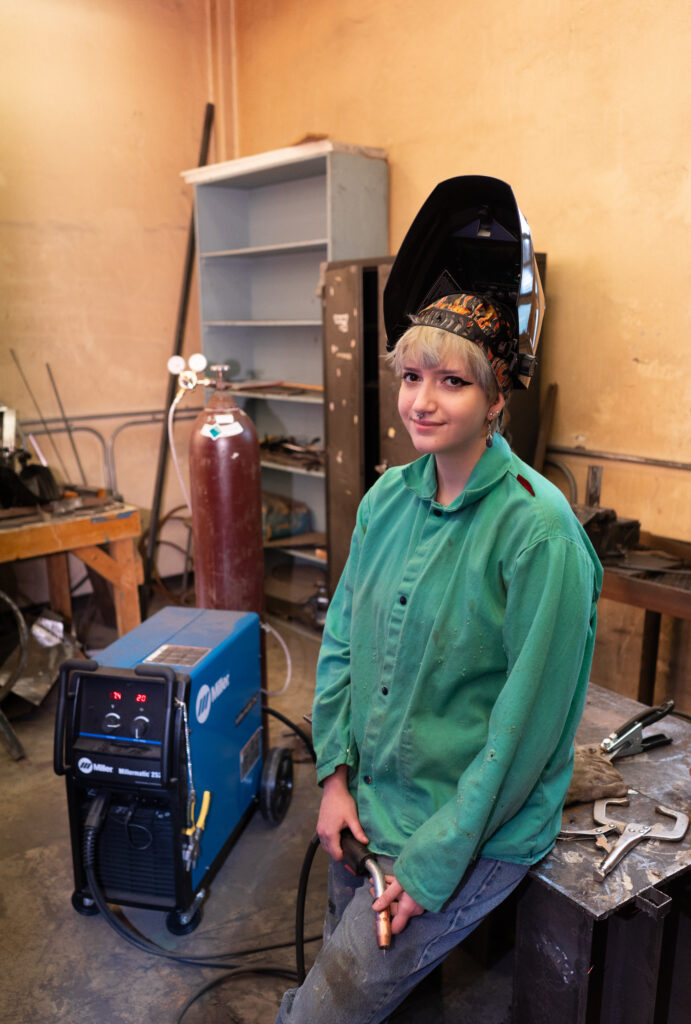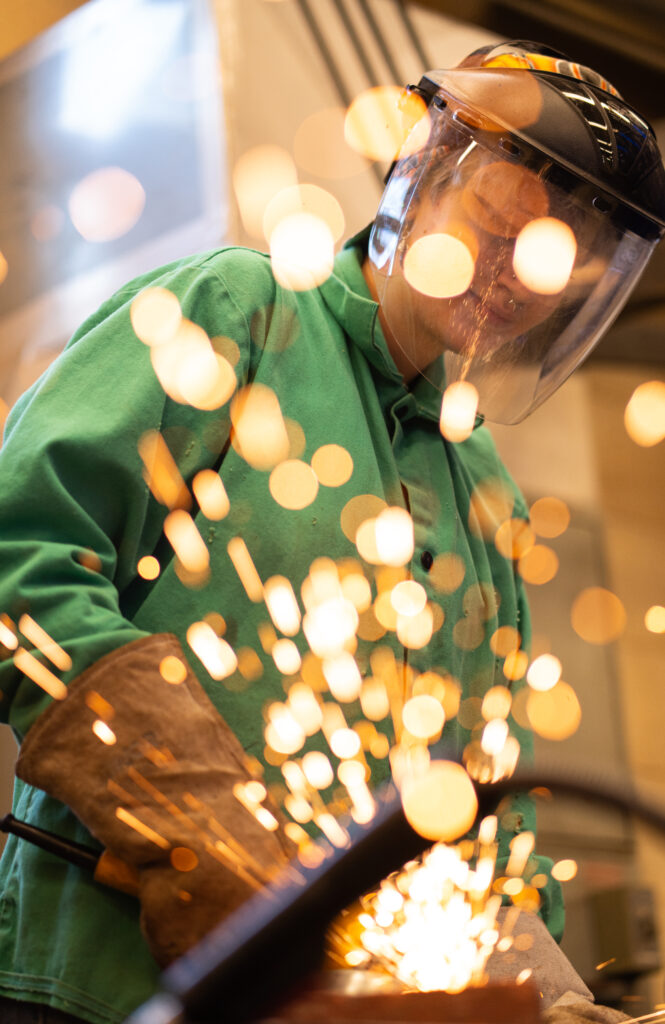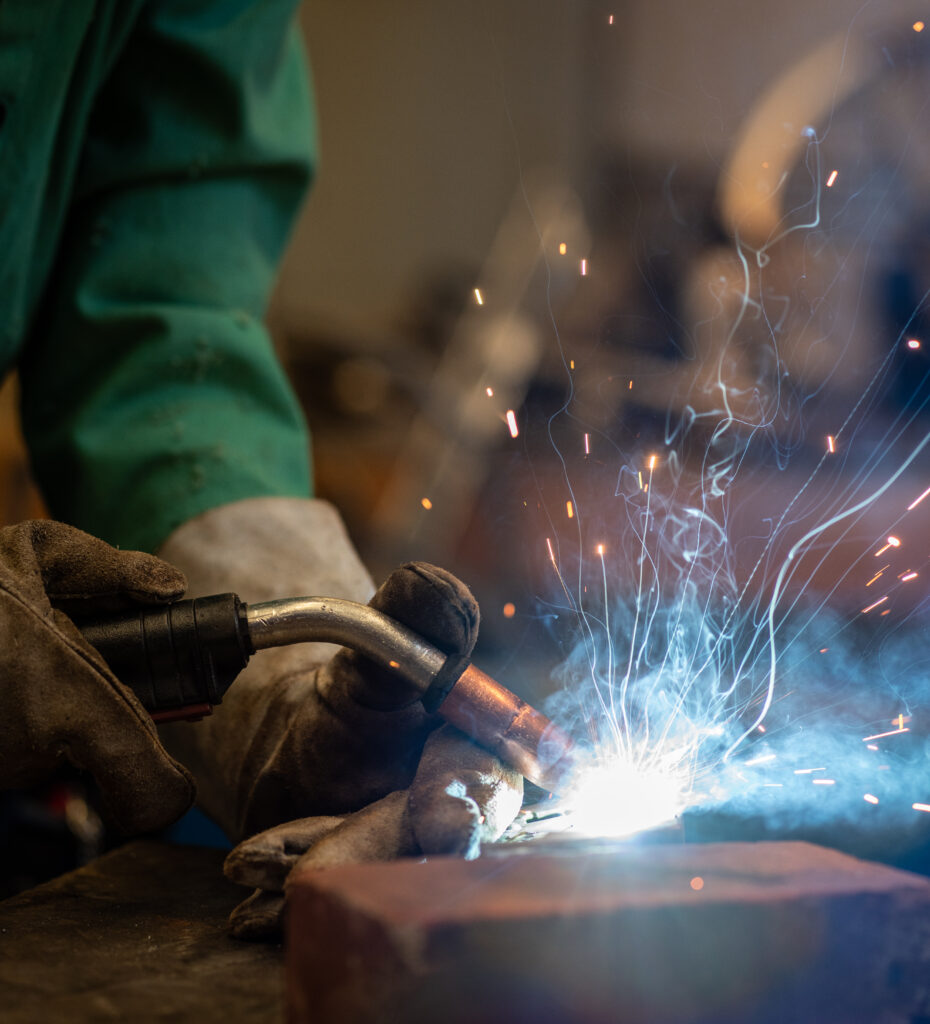By Jasmine Jones
Melanie Reichert considers herself an interdisciplinary artist, but specializes in large-scale metalwork and public art. Reichert graduated from Southeast Missouri State University in May 2022 with a degree in sculpture. Two of her metal sculptures are currently on display in Cape Girardeau: “Little St. Louis,” outside of eDen Health Spa & Salon, and “Ciconia,” outside Broadway Pharmacy on Broadway St.
Here, Reichert answers questions about her artistic process.
As an artist, what drew you towards metalworking?
Welding was something I got into later in my school career. My whole life, I was like, “I’m a painter. My grandmother was a painter. My mom likes to paint. I’m going to go to school, and I’m going to be a painter.” … Then, we got sent home for COVID, and I just needed to get out of the house, and there happened to be a summer welding workshop at SEMO, and I took that class.
That class changed my life for some reason. I immediately fell in love with welding. It was just something that really clicked with me. I made a sketch for my first sculpture project, and I was able to just make it, and it looked exactly how I pictured it in my head, which was something I’d never experienced before with painting.
Are there certain ideas that led you to create your first major sculpture?
It was called “Per Aspera.” It means “through difficulties” in Latin. … [With it,] I really got into the [metal] material. Steel is such an industrialized material, but it is taken from the earth. It’s taken, purified and turned into sheet metal from the earth, and I was thinking about the process of how steel exists — especially if it’s mild steel, not stainless steel. [Mild steel] is eventually going to rust over time and turn to dust. It will take a while, but someday, it will go back to the earth. So, I was thinking a lot about that. What it means for things to come from nature, be industrialized and return to nature.
Can you describe your process of taking a vision and bringing it to life through sculpture?
I start with a sketch. I start with 2D, which is where I start with all of my art. And then, from there, I feel like it almost just happens on its own. My brain just turns off, and it’s all work, all physical work, which is something that I really like. I like the process of putting your whole body into something. Doing all that heavy lifting. Doing all that sweating. It’s blood, sweat and tears all the way.
You showed me a tattoo of your first large-scale sculpture, “Per Aspera,” on your arm. Why do you want to tattoo your art pieces onto your body?
Eventually, I want to get little tattoos dedicated to all my pieces. … They are pieces of myself, and I put so much time into those. Like the arch [sculpture] at eDen Spa, it’s called “Little St. Louis.” I spent over 200 hours on that thing. That thing was a monster in the studio. It’s also the largest sculpture a SEMO student has ever made. It’s around 11 feet tall.
I just put so much time into [my sculptures], so I want to remember that, and I like tattoos. But [the sculptures] really do feel like pieces of myself that I want to keep with me forever, even if they’re somewhere far away.
Why is it important to create?
It’s therapeutic. Just having a hands-on thing to do, something that I can focus on without thinking about everything else that’s going on in my life. And like some people say, all art is a self-portrait, whether or not it’s actually a portrait of you. I feel like everything that I create is a piece of myself, and it’s nice to be able to see those pieces.
What is something that brings you joy?
My cat. Art and my cat. That’s all I need in life, is to make things and have a little cat.
What is your advice for others wanting to try new artistic mediums such as metalwork?
Pretty much just the concept of not limiting yourself. I was so focused on being a painter and how sculpture wasn’t my thing, and if COVID hadn’t happened, and I hadn’t gone to take that welding class, I probably wouldn’t have gotten into it. I had a limited view of myself back then. I was like, “I am a painter.” I don’t think that people should label themselves in that way. If you’re an artist, you’re an artist. … Try everything that you can, and don’t hold back.




